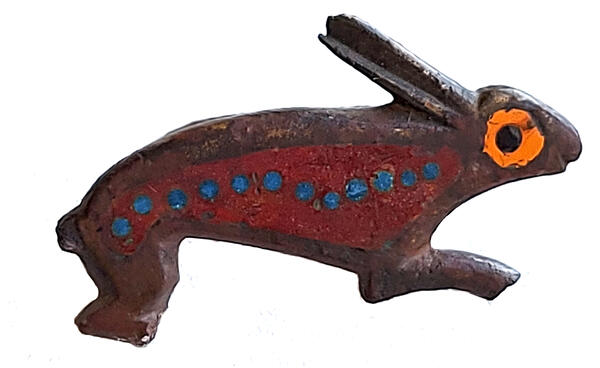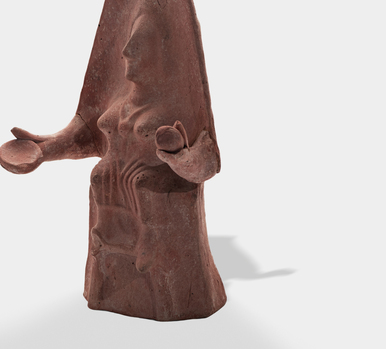The exhibition of the Tanais Archaeological Museum-Reserve features a bronze fibula, or a brooch, in the shape of a hare. It was found in the tomb of a woman from the 2nd century CE. These types of artifacts are important for understanding cultural practices and material culture of the time of Tanais.
No other artifacts characteristic of the time period were found in this burial. However, archaeologists discovered the remains of a special headband, known as a tainia, on the head of the buried woman. This headband was embroidered with golden beads. At that time, fibulae were used as jewelry or accessories for both men’s and women’s clothing. The fibula had a smooth shield at the top, decorated with multicolored enamel. One of the most distinctive features of this fibula is the hare’s eye, highlighted with a bright yellow circle and a black pupil inside. This detailed design proves that the craftsperson was skilled and attentive to detail. The body of the fibula is decorated with dark red enamel and several small, wavy dark blue circles in the center. These patterns may have had symbolic meanings or simply served as decorative elements. Another interesting feature of the hare-shaped shield is the ears and legs. The ears are narrow and long, making the fibula graceful and elegant. The hare is depicted jumping, with bent legs, creating a dynamic image. These details may have had a symbolic meaning and indicated the professionalism of the craftsperson.
Presumably, the fibula came from a provincial Roman workshop, which, in turn, shows that there was cross-border trade and the exchange of goods between regions. Objects like fibulae served not only a practical purpose but also represented status or belonging to a particular group or class. Such finds are rare. This shows that the objects held significance for the buried woman, possibly indicating her high social standing or religious beliefs.



